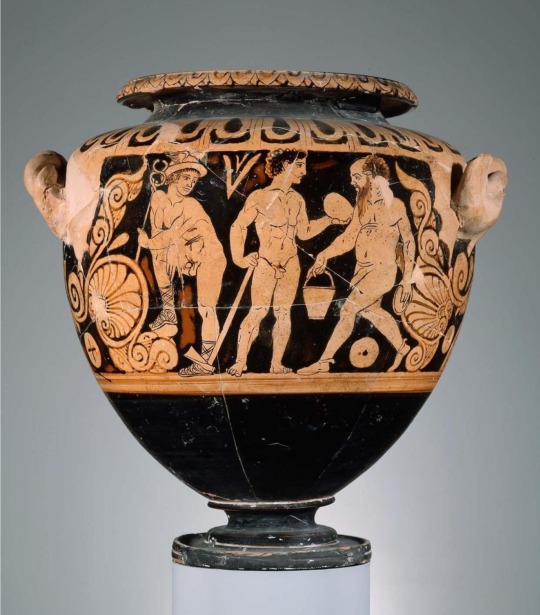#limc
Explore tagged Tumblr posts
Text
Quidditism

Quidditism is an ideology and a movement that seeks to take peaceful action to push the world towards an accepting, tolerant and fully free future, where everyone can thrive without fear.

Why quidditism?
The word 'quiddity' has 2 major definitions. The first one being "whatever makes something what is is, the essence". The movement seeks to establish a world where everyone is allowed to fully embrace themselves and who they truly are. In other words we wish for people to embrace their essence. The second definition of the world 'quiddity' is "deviation from an established pattern or norm, eccentricity". The quidditism movement focuses on marginalised identities such as LGBTQIA+ identities or paraphilias as these people are not allowed, in today's society, to flourish as themselves without fear. In other words, the liberation and normalisation of people considered eccentric, whether it be by their gender presentation, attraction or neurodiversity, is central to our goal.
Emoji Code -🪷💫

Quidditism's core values
Now, let's go over quidditism`s beliefs and summarize them.
Radical Inclusion
Radical inclusion is the first of the values we'll go over. Being a radical inclusionist means accepting all 'good-faith' identities. But what even is a 'good-faith' identity?
There are 2 main criteria for an identity to be of 'good-faith'. The first one being that the identity is genuine, and not taken up to prove a point, to grift, or to be generally disingenuous. In other words, if you genuinely identify with it, this box is checked. The second criteria is the one where controversy arises, It is generally defined as being harmless. However, what is considered harmless may vary from individual to individual. Quidditists generally consider that as long as it doesn't do any real world harm (like taking up limited resources, although it is rare a simple identity can achieve this) and tries it's best to be non-offensive and non-bigoted, the identity is good faith. In other words, identifying as a transvestite because it feels right to you, and while having read up on the terms history is completely good faith, however identifying as the same thing to try and mock trans people isn't.
So, quidditists are radically inclusive: they support any genuine identity that does its best to be harmless.
Paraphilias & Contact
Now, we talked about paraphilias above. A paraphilia is defined as an unconventional sexual attraction. In our day & age, homosexuality isn't considered one, however back when the fight for the LGBTQIA+ community was far less advanced, it was considered a paraphilic disorder.
Wait a second, what even is the difference between a paraphilia and a paraphilic disorder? Nothing except the "disorder' part, aka the factor of "is it causing harm or distress to you or people around you".
However, paraphilias are never inherently considered disorders in quidditism.
Having said that, we consider them the same way as we do kinks and fetishes. They are cousins after all: kink regroups all use of unconventional sexual practises or fantasies while fetishes are a form of sexual desire strongly linked to a particular thing or activity. They overlap a whole lot, don't you think?
In general, we will use these terms interchangeably.
You could summarise quidditism's contact beliefs by "if it is consensual, it's fine", but you would need to define consent for this. So what is consent?
Consent, as a noun, is defined as the permission for something to happen or the agreement to do something. As a verb, it is defined as giving permission for something to happen or to do something.
Additionally, anyone who consents must be able to back out and change their minds at any point before, during or after what they initially consented to without fear of repercussions. They should also feel free to give (or not) their consent in the first place, and not be forced to do so.
There are a few points that we will examine further here.
Firstly, consenting to sex in itself is a complex thing and not just the act of understanding and agreeing, so there must be both a technical understanding of sex along with an emotional understanding of sex for consent to truly be possible.
Secondly, anyone of age and not under the influence can consent before regression, use of substance, sleep or death.
Thirdly, animals cannot consent to sexual acts due to not having the cognitive ability and speech for it. Additionally, just because an animal's body enjoys an act does not mean they consented to it, as consent is a clear agreement and acknowledgement, not body language or what you perceive.
And lastly, younger people are a very nuanced topic. We believe they do have the ability to consent, but that in the current state of the world, it is often unsafe. You can learn more about that in our article about contact between someone and their object of attraction.
Total bodily autonomy
Bodily autonomy is defined as the right to make decisions about your own body, life and future, without coercion or violence. When we say total bodily autonomy, it isn't trivial. In today's world, abortion access and rights are threatened more and more, women are still subject to genitalia mutilation at a very young age in multiple countries, and trans people need to jump through hoops to get gender affirming care. But to us, it doesn't stop there. We want to fight so that everyone has the right to make informed choices on what they do with their body and life, whether that's extreme body modification, gender affirming care, abortion, or just a tattoo.
Anti-psychiatry
Anti-psychiatry is the view that psychiatric treatment can often be more damaging than helpful. Do not the often in the above sentence. So, what does that mean in practise? A few things.
Psychiatric care should be entirely optional. Whether you want to recover with psychiatric help, by yourself or even not al all, you should be given all the necessary information to make that choice for yourself. This ties back in with the last point, total bodily autonomy, and with the next one.
Chosen Recovery
We've spoken about informed total bodily autonomy and what that would mean in psychiatry: the option to seek recovery or not. Here, we are extending this beyond psychiatry. We believe that no matter what you might have that could be recovered from, you should get to choose whether you want to or not. First, we believe that that is your right, and second, we are horrifically aware of the fail rates of forcing someone into recovery: as a general rule of thumb, if someone doesn't want recovery, they won't recover, no matter what you try. That doesn't mean you can't bring the option to their attention, just that ultimately, it is their choice, and theirs alone.
Transhumanism
Following up on all the bodily autonomy related beliefs, we have transhumanism. It is a movement that advocates the enhancements of the human body and condition by developing and making widely available new and future technologies that can greatly enhance longevity, cognition, and well-being. That would include wing or animal ears implants for transspecies folks, to only cite one of many examples.
Realmism
Realmism is an ideology based around the belief in magic and the multiverse. It promotes all faiths and religions, as well as the practise of reality shifting and the right to outlandish, weird, and uncommon beliefs, with an emphasis on being pro-delusion. If you wish to learn more, the entry on transid.org goes into more details.
Existentialism
Existentialism is the philosophical belief we are each responsible for creating purpose or meaning in our own lives. It isn't given to us by an authority. Whether you choose to seek it in faith, the arts, social causes or just your own happiness, it is entirely yours to craft.
Pacifism
Pacifism is a commitment to peace and an oppositioin to violence, war in particular. The quidditism movement believes that unless strictly necessary, violence should never be used, defining it as a last resort. How do we achieve our goals then? Educating.
Punk
Quidditism follows a very punk-ish ethos. The punk ethos is primarily made up of beliefs such as non-conformity, anti-capitalism, anti-authoritarianism, anti-corporatism, a do-it-yourself ethic, anti-consumerist, anti-greed, direct action, and not selling out".

Resources
🪷 Discord Server
💫 Blog

#quidditism#progressive punk#existantial punk#exipunk#existance#fleur community#liom#liom community#liomogai#mogai#mogai community#existentialism#transhumanism#punk#anarchy#pacifism#limc#rqc#rq#radqueer#pro para#profiction#proship#anti censorship#progressivism
62 notes
·
View notes
Text
Hey guys guess what https://youtu.be/XROAZ4J9b9M?si=xlD-c6XJqH9PY4K2
youtube
#196#r/196#r196#lessons in meme culture#limc#dungeon meshi#delicious in dungeon#laios dungeon meshi#kabru dungeon meshi#i’m not calling you good boy#Youtube
24 notes
·
View notes
Text
TW: Mentions of animal abuse/murder
Someone get 4Chan on this shit, I ain’t letting cat abuse slide
youtube
#cats#4chan#animals#pets#mr. fresh#cats of tumblr#cat memes#silly cats#protect animals#anti animal abuse#limc#lessons in meme culture#YouTube#yt
31 notes
·
View notes
Text
youtube
Hey look, Lessons In Meme Culture made a video on Nanalan and Mr. Meaty.
11 notes
·
View notes
Text
youtube
0 notes
Text
HEY GUYS DID YOU HEAR? ELEVENLABS ADDED MORE LANGUAGES TO THEIR SITE!!
#I did a greek lessons in meme culture cuz i feel like im crazy#i also think hell kill the meme of course but well see#also i am greek thats the context#elevenlabs#greek memes#lessons in meme culture#limc#mrbeast#mr beast#drama#funny
0 notes
Note
Mossy, I'm sorry for doing this to you. But I am legally obligated to sound the PM alarm for committing the action or reposting a singular post relating to project moon. My condolences.
you would not BELIEVE what I’m getting into recently /silly

#Whatever. Go my limbus company#Thank you to Torch again for introducing me to the wonderful world of Project moons games!!!!#Aka I can’t afford LOR nor LobC so I’ve been playing limbus company RELIGIOUSLY over the past week#Like I’ve had this game for probably 6 days and I’m already nearing the end of canto three#I am absolutely INSANE over this game#My favorite characters so far are defintely Sinclair and Don I love them beyond words they’re so silly#FUCK YIU KROMER#Anyways#id you want my LimC friendcode…#Stares at you with my big ol eyes#just ask for it in DMs and I’ll throw it at your face I don’t have the best Id’s yet to be honest but yea :3!#Cro chatter#limbus company#projmoon#project moon#pjmoon
27 notes
·
View notes
Text
“Why do you care about other people it’s not your business” Oh so we just say things now without thinking first??? I’m sure that kind of thinking is going great for lots of peoples around the world.
9 notes
·
View notes
Text


Artemis as Potnia Theron. Handle of Grächwil hydria. c. 570 BCE. Potnia Theron holding hares and flanked by two seated lions. Bern, Bern. Hist. Mus. 11620. LIMC Artemis 47.
Information from: A GRIPPING TAIL: Re-interpreting the Archaic Potnia Theron Schema By Emily Simon, and Moore, Daniel Walker. “The Etruscan Roots of the Reinheim Armring.” Germania, 2021, https://doi.org/10.11588/ger.2021.92210.
Photo on the left by Saiko on Wikipedia.
Drawing on the right from: Reinach, Salomon. Répertoire de la statuaire grecque et romaine: Sept mille statues antiques. 2. éd. 1908. France, E. Leroux, 1908.
I've written more about Artemis as Mistress of Animals / Potnia Theron here.
#mistress of animals#mistress of beasts#potnia theron#artemis#artemis potnia theron#greek mythology#greek art#ancient greek art#scythian ancestral goddess
100 notes
·
View notes
Text
This is not a solution to the problem of bad images cluttering search results, but I just wanna provide some resources for those in the tags/comments who are searching for images of x or y figure:
every volume of the LIMC is available on archive.org
LIMC = Lexicon Iconographicum Mythologiae Classicae. It is a dictionary/Encyclopedia of images of classical mythology. Regardless of how much you tweak your search results, the chances are that the LIMC will be a better resource.
There is also ArtStore. (Jstor image collections).
Major museums such as the Met, the British Museum and the Louvre, among others, all have search functions for their catalogues.
There are also some Wikipedia / wikimedia pages that will allow you to see the photos that people have put on there and tagged with the names of figures represented, etc.
All of these will be better tools (and have been, since before the AI image clutter problem) than Google for the kind of images people are searching for.
Nothing in this world makes me feel a greater sense of disappointment and misery than searching up a character from greek mythology and the first picture being a shitty ai image of an overly muscled greased up guy with indiscernible clouds in the background
Where’s the red/black figure pottery? Where’s the chipped and worn away friezes and frescos that barely show their face? Where’s the iconic 19th century allegorical painting of them? Where are the mosaics? Where are the statues? Why must we throw away preserved artwork for the sake of ai slop?
Truly it makes me violent
#I’ve had the impression recently that not enough people know about the LIMC especially#it’s such an invaluable resource#I guess I can write up a longer post about using these resources at some point if people want#tagamemnon
891 notes
·
View notes
Text
"In regard to myth, although there does not exist a female equivalent of the well-known loves between a god and a young mortal (e.g., Apollo and Hyacinthus), a motif of interest appears in the story of Callisto: according to one variation, attested by scholia on Hesiod and Aratos, Zeus adopts the guise of Artemis in order to engage in a sexual relationship with the goddess’s preferred companion." Oxford Classical Dictionary, Female Homosexuality, Sandra Boehringer
This first surviving mention that Zeus disguised himself as Artemis in order to approach Kallisto is (quite upsettingly) from a lost comedy by Amphis (4th C. BC), where the butt of the joke is that a naive Kallisto accuses Artemis of having gotten her pregnant:
"But as Amphis, writer of comedies, says, Zeus, assuming the form of Artemis, followed the girl as if to aid her in hunting, and embraced her when out of sight of the rest. Questioned by Artemis as to the reason for her swollen form, she replied that it was the goddess' fault, and because of this reply, Artemis changed her into the shape we mentioned above [bear]." (Amphis fr. 47 Kock, as quoted in Hyginus Astronomica 2.1.2)
Whether Zeus' disguise was invented by Amphis for "comedic effect" or was part of an earlier tradition is a matter of conjecture, but it is certainly well attested later on and by roman times it had become the most popular variant.
(Amphis fr. 46 [Schol. Aratus 37-44]; Hyg. Poet. Astr. 2.1.2; cf. Apollod. Bibl. 3.100f.; Nonnus Dion. 2.122f., 33.288-92, 36.66-74; Ov. Met. 2.401-530; Schol. Callim. Hymn 1.41; Schol. Lycoph. Alex. 481).




~Artistic sources for Kallisto's transformation are very sparse, which I think is kind of a pity considering how hauntingly beautiful and awesome surviving images are (in order):
LIMC Kallisto 5, Museum of Fine Arts Boston. Kallisto transforming into a bear.
LIMC Kallisto 18, Sammlung Herbert A. Cahn Basel. Bear-headed boy next to bear-headed woman, most likely Arkas and Kallisto.
LIMC Kallisto 7, Private Collection. Kallisto with the infant Arkas on her lap.
LIMC Kallisto 6, J. Paul Getty Museum Malibu. Huntsman, Kallisto turning into a bear, Hermes rescuing the infant Arkas.
#Id love to do an in depth examination of Kallisto one day#there are so many different versions of the myth and so many theories surrounding it#greek mythology#greek myths#greek gods#ancient art#greek pottery#Kallisto#Callisto#Artemis#Zeus#hellenic deities#tagamemnon
153 notes
·
View notes
Text
I was searching if there is any art that portrays both Adonis and Persephone, and the only result with both of those tags in LIMC is this:

Although Adonis is absent, this Etruscan mirror likely references the version of the myth recounted by Pseudo-Apollodorus, in which Aphrodite and Persephone dispute over him. Aphrodite appears to cover her face with fabric, Zeus stands between them holding his lightning bolt, possibly mediating, and Persephone points downward.
#the cot/basket/bed in the middle is very interesting#are they saying that adonis is a baby in this scene?#but the mirror doesn’t mention adonis at all#he’s so confusing tbh#greek mythology#tagamemnon#greek gods
14 notes
·
View notes
Text
„The friendship of Athena and Herakles is further evidenced in Athena’s vested interest in his deification. … There are 198 extant vase paintings known to depict Herakles’ apotheosis in the Beazley Archives alone. A common composition for scenes of Herakles’ apotheosis is that of Athena taking him by the wrist in what is known as the cheir’ epi karpo, or “hand-on-wrist” gesture. While one may find some similar scenes featuring Hermes with Herakles (though none are known to the author to depict the hand-on-wrist gesture), Athena is by far the more common figure to accompany Herakles during his apotheosis. One such example is that of the famous black-figure cup, now in London, that features Zeus, Herakles, and Athena (LIMC: Athena 429, ABV 168). The unbelievably small yet intricate scene has a rather dynamic composition, with Athena clasping by the wrist a seemingly (and uncharacteristically) passive Herakles, who lags behind and is drawn forward, while Zeus remains seated. This composition and this gesture of Athena, her dragging Herakles by the wrist, is a typical formulaic composition commonplace in many abduction scenes. This formula, which usually features a male who grabs and pulls the wrist of a female, is common throughout Archaic and Classic depictions of abductions, evidenced in scenes such as those of Paris and Helen, Zeus and Ganymede, or Hades and Persephone. …
Not only might a viewer infer Athena’s sexual dominance over Herakles by means of their adherence to the formulaic composition (as we have seen in Figures 2 and 5) but the viewer may also rightly assume Athena’s sexual aggression towards Herakles as seen on the following red-figure neck amphora, now residing in London (LIMC: 3094, ARV2: 670, BM: E 321), where Athena chases after Herakles with spear drawn. Herakles flees from her whilst covering his otherwise exposed genitalia with his club. The abundance of phallic symbolism in the scene are hard to miss. This scene is like many other rape scenes wherein we usually see an armed man, an erect satyr, or lustful god pursuing a frightened woman or nymph fleeing their oft unwanted advances. … In such scenes, the formula is that the pursuer usually extends a phallic symbol, the pursued frequently extends their arms in an attempt to flee, whilstthe two of them make eye contact – which signifies the moment before the prey is overtaken by the predator. Again, we will consider this scene in context with its type. Much as the abduction myth of Helen by Paris is famous in ancient Greece, so too is the abduction of Persephone by Hades. This particular abduction myth is more frequently depicted by means of a much more dramatic composition, with Hades in his chariot sweeping Persephone off her feet by grabbing her round the waist – leaving her upper torso flying backwards flailing wildly and desperately in the air as she calls for help. But on this red-figure amphora in Naples (LIMC: Hades 77, ARV2: 647) the abduction is represented instead through the use of our second formula of gesture and phallic symbolism that denote the Liebesverfolgung, or “love-chase.” Hades chases down Persephone, both with the formulaic animated gestures, but Hades is also replete with both rod and cornucopia – the horn of which forms a very conspicuous phallus. Meanwhile, returning once more to the Helen and Paris narrative, on the following red-figure crater, now in New York (LIMC: Helene 52) we find an almost identical composition to that of our first example of this Liebesverfolgung love-chase formula, where we saw Athena chase after Herakles with her spear, but we now see Paris chasing Helen with his javelins, which also conspicuously protrude from Paris’ pelvis through Helen’s. …
While the potential implications for such depictions of Athena and Herakles may be up for debate, this next vase actually explicitly depicts Herakles and Athena embarking on a wedding procession. Beginning in the mid 6th century B.C., coinciding with the Peisistratid period, the depiction of Herakles’ apotheosis shifted from the cheir’ epi karpo abduction type typical of depictions from the Archaic period to showing the marital celebration itself in the ensuing Classical period. This type becomes relatively more common thereafter, showing Herakles as he readies the team of horses for Athena’s chariot in preparation for the imminent procession, the two of them in the chariot together, or Herakles lifting Athena up into the chariot, as seen on the following black-figure Attic amphora ascribed to the Priam Painter that is nowresiding in Oxford (LIMC: Herakles 1423, CVA: Great Britain 409 5 (212), ABV: 331). These compositions are yet another set of types used to convey marriage celebrations. While marriage and abduction scenes have been shown to be useful for also showing apotheosis scenes, this scene is complicated by an inscription transposed in the negative space above and between Athena and Herakles’ heads- one that has previously proven “difficult” for scholars. The inscription reads “Herakleous Kore”, and has inspired ongoing debate. Beazley contends that the two words “Herakleous” and “Kore” ought not be read together - despite their composition and grammatical forms - because the translation when read together would be “Herakles’ girl”. … Meanwhile, Susan Deacy, like Shapiro, concurs with Boardman’s assessment that the inscription ought to be read together …, citing yet another vase on which there is a similar scene of Athena and Herakles that also bears the same inscription “Herakles’ girl”.”
- Athena and Herakles a Divine Couple? The Use Of Ancient Sexual Artistic Conventions In Context by A. S. Cameron
#herakles#heracles#athena#athene#ancient greek art#vase painting#iconography#quotes#excerpts#athenakles???
27 notes
·
View notes
Text


Etruscan or Faliscan Red Figure Stamnos, attributed to the Painter of the Oxford Ganymede, Classical Period, 400–350 B.C.
Descriptions below taken from MFA Boston:
Side A: Polydeukes is binding Amykos to a tree trunk in front of a fountain, which consists of a stream flowing from the center of a flower into a tub. A plant, a folded cloak, and an alabastron are represented on the ground below. Polydeukes braces himself with one knee against the tree to draw tight the bindings, which themselves consist of young saplings. Like Amykos, he is infibulated and wears leather boxing thongs.
Amykos, king of the savage Bebrykes of Bithynia compelled all strangers to box with him, otherwise denying them drink from the spring. Polydeukes, a skilled boxer, overcame him and punished his hubris by binding him. Except for the fountain, the composition of side A is very close to that on the bronze Ficoroni Cista in the Villa Giulia; the postures of the figures are nearly identical, and the cloak and alabastron are present at the base of the tree.
Side B: Hermes, Polydeukes, and a satyr old and fat enough to be called Silenos are shown in a scene possibly inspired by a satyr play. Hermes stands at the left, his right leg propped on the tendril of an adjacent palmette. He wears high-laced sandals and a winged helmet and carries his caduceus in his left hand. He looks back to the right at Polydeukes, who stands looking at the egg in his left hand that contains his sister Helen. In his other hand is a mattock, with which he will crack open the egg. Approaching from the right is Silenos, wearing shoes and carrying a situla in his right hand and a phiale in his left.
The subject of side B may be unique. Beazley listed two vases and eight mirrors representing either Hermes or Polydeukes delivering the egg of Helen to Leda or Tyndareos or both (EVP, pp. 115-116). Both the god and the hero are present on this vase, but Silenos is a poor substitute for either of the two recipients. Beazley suggested that Polydeukes has just discovered the egg while loosening the soil in the palestra with his mattock, a preparation for exercising on the hard ground (EVP, p. 60). The egg had been hidden there by Hermes, which explains his presence. Silenos comes up with a bucket of water to wash the egg (or perhaps hoping to boil it!). The presence of Silenos suggests the influence of satyric drama; compare the phlyax actor on an Apulian bell-krater, who cracks open Helen's egg with an axe (Bari 3899: RVAp. I, p. 148, no. 96; LIMC, IV, pl. 291,Helene 5) According to Horace, Polydeukes and his brother Kastor were also born from an egg (Sat,2,1,26). Evidence that this story was known early enough to be parodied by an Apulian vase-painter of the mid-fourth century may be provided by an unpublished Gnathian bell-krater recently in the New York art market, with an actor in female guise watching an egg on an altar give birth to an erect phallus.
#greek mythology#greek pottery#tagamemnon#polydeuces#pollux#amykos#hermes#silenus#the idea of a satyr play(s?) based on the birth of helen is fascinating to me 👀 imagine if one day they discover something like that...#playing into her birth being a literal bell toll of doom for demi-mankind. but also being born from an egg is straight up funny and silly.#ofc there's satyric representations of that! hermes being like 'I have a surprise for you :) but you'll have to find it first!'? amazing.#silenus about to either help clean the egg or COOK it??? asdffghfjgb I love this. it's so goofy.#also regarding side A. guess who just learnt what a dog-tie (κυνοδέσμη) is 😀 ...well! I guess now I know!
34 notes
·
View notes
Text

One of my favourite finds for Ganymede and Zeus in the LIMC (under the Etruscan "Catmite" obviously, which came at the end of Ganymede's section). The arm around Zeus' shoulder!
27 notes
·
View notes

